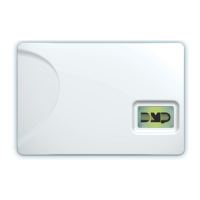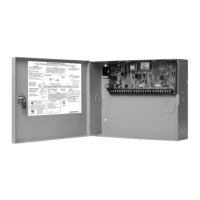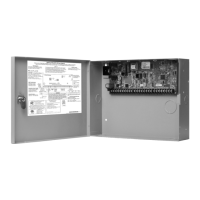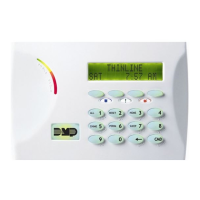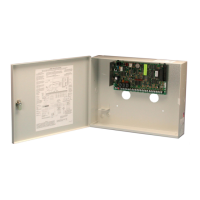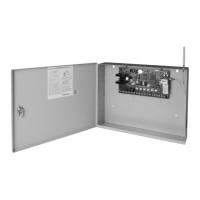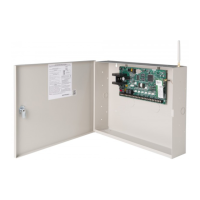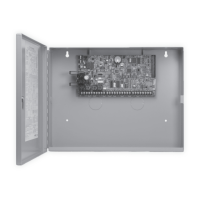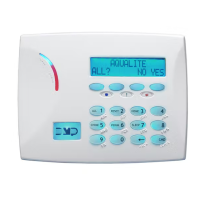
Do you have a question about the DMP Electronics XT50 and is the answer not in the manual?
| Resolution | 800 x 480 pixels |
|---|---|
| Touchscreen | Capacitive |
| Weight | 300g |
| Display | 5-inch TFT LCD |
| Connectivity | Ethernet |
| Storage Temperature | -20°C to +60°C |
| Humidity | non-condensing |
Instructions for silencing alarms and handling trouble tones.
Overview of system features and benefits.
Advice on minimizing false alarms and performing weekly tests.
Steps for developing and rehearsing emergency plans.
Role of alarm systems in early warning.
Describes Thinline, Icon, Wireless, and Graphic Touchscreen keypads.
Illustrates the physical layouts of various keypads.
How to make selections using keypad keys or touch areas.
Explains the meaning of LED indicators on keypads.
Describes status indicated by logos and LEDs on wireless keypads.
Instructions for using panic buttons on different keypad types.
Explains the function of essential keys like CMD and Back Arrow.
Details how to enter characters using the number pad.
Describes the standard QWERTY keyboard layout.
Covers adjustments for brightness, tone, and volume.
Details model/serial numbers, address, and carousel menu editing.
Information on wireless devices and key fobs.
Explains LED meanings and optimal usage.
Explains displays for low battery, missing transmitters, and jamming.
Describes displays for alarms, code entry, and system status.
Explains messages like INVALID CODE, TROUBLE, and TEST IN PROGRESS.
Details Email/Cell Phone and MyAccess™ Text Messaging capabilities.
Defines Instant, 24-Hour, and Area zone types.
Explains how the system communicates with a central station.
Describes how to interpret these system displays.
Explains what happens if an exit door is not closed properly after arming.
Describes different arming modes.
Details the steps and checks for arming the system.
How to arm/disarm using key fobs.
Steps for arming specific areas or all areas.
Steps to disarm specific areas or all areas.
Procedures for disarming when an alarm is active.
Detailed steps for disarming areas.
Reiteration of alarm disarming.
Explains one-button shortcuts for system functions.
Details specific shortcut keys for arming different modes.
How to reset detectors and enable zone monitoring/chime.
How to send reports and extend exit delay.
Steps to enter the system's user menu.
Lists available functions within the user menu.
How to send an arrival report for monitoring.
How to monitor a zone for user activity.
How to reset detectors and clear alarms.
How to manually control system outputs.
How to activate predefined Z-Wave device groups.
Overview of Z-Wave setup functions like Add, List, Remove.
Step-by-step guide to adding new Z-Wave devices.
How to view, rename, and check status of Z-Wave devices.
How to verify communication with Z-Wave devices.
Steps to delete devices from the system.
How to create custom Z-Wave device groups.
How to assign devices to existing favorites.
How to set device behaviors within favorites.
How to configure thermostat behavior in favorites.
How to modify existing favorite configurations.
How to delete devices from favorite groups.
How to migrate Z-Wave devices from another controller.
How to update and re-establish Z-Wave device communication.
Introduction to adding, removing, or testing Wi-Fi networks.
Steps for connecting using WPS, listing, or manual setup.
How to verify the system's connection to the Wi-Fi network.
How to bypass or restore protection zones.
How to monitor zones for activity or testing.
Detailed steps for setting up zone monitoring.
Guide for testing system components like battery and communication.
Explains user numbers, codes, and authority levels.
Table showing functions accessible by different authority levels.
Step-by-step process for creating new user codes.
Instructions for modifying your existing user code.
Detailed steps for modifying user codes.
How to remove user codes from the system.
How to set up automatic arming/disarming times.
Explains schedules for fixed arming/disarming times.
How to temporarily extend the scheduled closing time.
How to automate system outputs (lights, etc.).
How to create schedules based on sunrise/sunset.
How to schedule activation of favorite Z-Wave device groups.
How to adjust the system's clock and calendar.
How to access logs of system events.
How to notify the central station of a system problem.
Information on tracking system configuration.
Details on defining system areas and managing outputs.
How to name connected Z-Wave devices.
Details on favorite numbers, names, and included devices.
How to assign actions to key fob buttons.
Section for recording user details.
Table for tracking user numbers, levels, and permissions.
How to view and scroll through system event logs.
Explains the display format for zone activity checks and bypassed zones.
Explains alarms, troubles, and faults for specific zones.
Describes events related to arming, disarming, check-ins, and code changes.
Explains displays for test reports, power issues, and interference.
Describes displays for wireless receiver communication issues.
Information on wireless devices and key fobs.
Explains LED meanings and optimal usage.
How door strike devices work with the system.
Using access cards for arming/disarming.
Using cards for All/Perimeter and Home/Away systems.
Using access readers during entry delay and for menu access.
Instructions on how to input names using the keypad.
Lists various reports sent via email or cell phone.
Explains how alarm messages are detailed.
Introduction to using text messages for system control.
Commands for arming all or specific areas.
How to cancel an alarm using text.
Using text commands to turn outputs on/off.
Text commands for Z-Wave lights.
How to activate Z-Wave favorites using text.
Commands to check armed status and device status.
How to manage text message subscriptions.
Overview of calling the system to arm/disarm.
Explains commands and audible feedback.
Explains common messages and their possible solutions.
